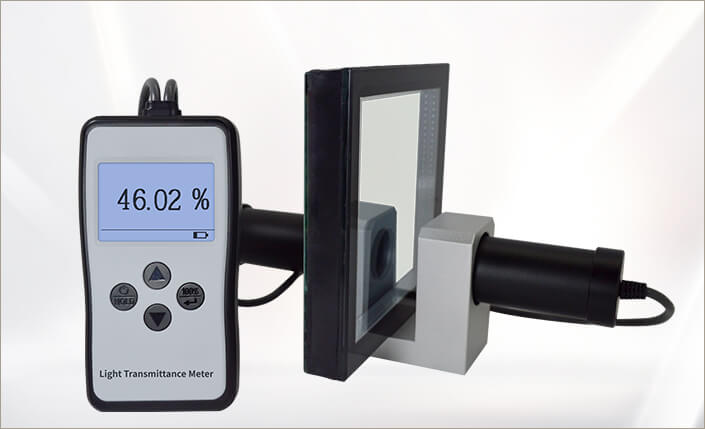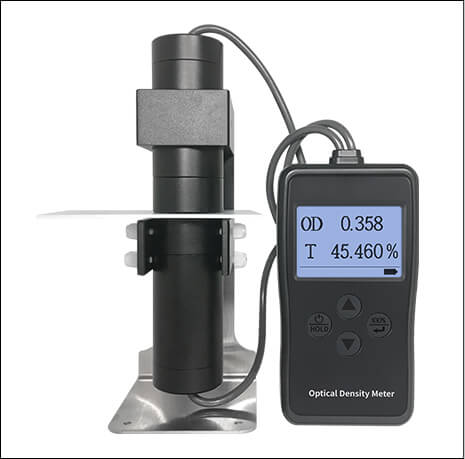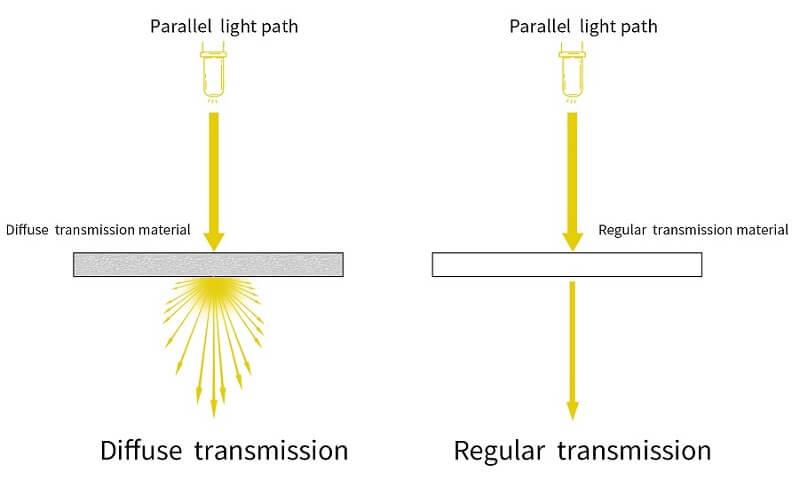MetriTec™ Light transmittance Meter
Product Detail
MetriTec™ Light transmittance Meter M110 Designed with a split-type structure, this model is ideal for testing automotive glass. Its compact, two-part design allows for easy placement on car windows, ensuring accurate measurements even in confined spaces.

MetriTec™ Light transmittance Meter M116 With a parallel optical and detachable design that specializes in regular transmission materials such as optical glass, acrylic sheets, and coated films. It provides precise transmittance readings for industries requiring high optical clarity and minimal distortion.

MetriTec™ Light transmittance Meter M155 can play a crucial role in ensuring that transparent materials meet industry standards for clarity, light transmittance, and optical performance, making it an essential tool in quality control and material development.

MetriTec™ Light transmittance Meter M117 is a precision instrument designed for measuring optical density, making it ideal for evaluating tinted glass, coated films, and lens inks. As an optical density meter (densitometer), the M117 is particularly well-suited for testing the light transmittance of opalescent translucent materials and matte surfaces, providing reliable data for both quality control and research applications.

FAQ:
How to Choose the Right Light Transmittance Meter?
Light transmittance meters play a crucial role in measuring the visible light transmittance of various materials, ensuring consistent quality control across industries and eliminating reliance on subjective visual assessments. An accurate light transmittance meter helps guarantee consistent and uniform of products.
Model Comparison Chart
| Model/SKU# |
MetriTec™ Light transmittance Meter M110 ELLTM110 |
MetriTec™ Light transmittance Meter M116 ELLTM116 |
MetriTec™ Light transmittance Meter M117 ELLTM117 |
MetriTec™ Light transmittance Meter M155 ELLTM155 |
| Light source | 380nm-760nm, conform to CIE photopic luminosity function | |||
| Test parameters | Visible light transmittance (VLT) | Visible light transmittance (VLT) ,Optical density (OD) |
Haze, Transmittance, CIE Lab, LCh, Yxy, Spectral transmittance, Clarity, Turbidity, Pt-Co(Hazen) | |
| Principle | Regular transmission | Diffuse transmission | D/0° | |
| Application | Car windshield, window and glass | Glass, PC and other transparentmaterials | Lampshades, zirconia and other opalescent , translucent, frosted materials | Glass, PC, Lampshades, opalescent , translucent, frosted materials, liquid |
|
Measurable material |
>40*40mm | Diameter>10mm | Diameter>2mm | Diameter>5mm |
| Accuracy | VLT: ±2% | VLT: ±1% |
VLT: ±1% (0%-50%); ±2% (50%-100%) OD: ±0.02 (0-2.00OD); ±2% (2.00-6.00OD) |
Haze/Clarity:±2% VLT: Better than ±1% |
| Resolution | VLT: 0.1% | VLT: 0.001%(0%-10%), 0.01%(10%-100%) |
VLT: 0.0005% (0%-10%), 0.005% (10% -100%); OD: 0.001OD (0.00-2.00OD); 0.01OD (2.00-4.00OD); 0.1OD (4.00-6.00OD) |
0.01% |
What is the difference between regular transmission and diffuse transmission?
1. Regular transmission
The phenomenon that light deflects through a material with a smooth surface and a uniform medium and then deflects at the same angle is called regular transmission.
2. Diffuse transmission
The light passes through a material with a rough surface or an uneven medium, the transmitted light will be scattered in many directions because the light will be refracted at different angles on the rough materials' surface and at the junction of the uneven medium, this phenomenon is known as diffuse transmission.
-
One key optical effect of diffuse transmission is wide-angle scattering, which results in haze. Haze occurs when light is scattered at large angles, leading to a milky or cloudy appearance. This phenomenon is particularly relevant in the evaluation of transparent plastics, films, and coatings, where excessive haze can impact both visual aesthetics and functional performance.
-
Another effect associated with diffuse transmission is narrow-angle scattering, which affects clarity. Clarity describes how well fine details can be seen through a transparent material. When light is deflected at small angles, it results in a distortion of object outlines, making fine details harder to recognize. Unlike haze, clarity is highly dependent on the distance between the observed object and the material—the farther the object, the greater the distortion. This property is particularly important for automotive windshields, display screens, and high-precision optical materials, where maintaining high clarity ensures optimal visibility and sharp image reproduction.
By understanding the principles and difference of regular transmission and diffuse transmission, industries can better select materials with appropriate optical properties. Instruments such as a haze meter or an optical density meter help quantify these effects, ensuring that transparent materials meet specific quality standards.
How accurate are your light transmittance meters?
In addition to the LS110 accuracy of ±2%, Linshang another light transmittance meters offer high-precision measurements with ±1% accuracy, ensuring reliable results.


